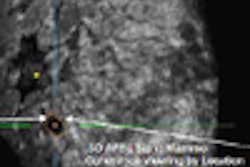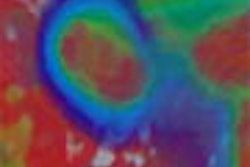The question of which kind of PACS architecture a hospital or imaging center should invest in should be passé by now, but it's not. Digital imaging technologies keep improving, making their role in surgical and treatment planning increasingly attractive to radiologists, as well as the physicians and surgeons with whom they collaborate.
At the 2007 International Symposium on Multidetector-Row CT sponsored by Stanford University in San Francisco, several speakers tackled the topic of whether it makes more sense to remain wedded to dedicated postprocessing workstations or to go with an integrated PACS solution. Jeffrey Mendel, chair of radiology at Caritas St. Elizabeth's Medical Center in Boston, shared his views on this topic as part of his presentation on how to choose between separate workstations and PACS integration for advanced processing functions.
"I think there is convergence and divergence happening at the same time," Mendel said. "Everyone recognizes that there is a need for both advanced visualization toolsets on PACS, as well as a need to share the resulting complex reconstructions with clinicians. So we are all talking about the need to integrate 3D imaging and specific clinical capabilities into the toolset of the PACS desktop. The divergence is in how best to achieve this."
While some people are looking at dedicated client-server options, there is already a tremendous installed base of advanced processing systems that can potentially integrate with distributed PACS workstations. The key trend is the movement away from separate advanced visualization workstations, and toward having the processing native within the PACS application, according to Mendel.
While many experienced PACS users are deciding which way to go with integrating advanced visualization solutions, many smaller hospitals haven't yet installed a PACS. Other institutions are in the process of replacing their first-generation film or modality-based PACS with a PACS solution focused on the needs of the entire medical center, Mendel said.
"If PACS and 3D imaging were being created right now, people would only be looking at fully integrated, distributed solutions," he said. "While dedicated advanced visualization (3D) workstations offer some advantages, advanced processing will continue to migrate to the PACS environment. So the choice today is really about how quickly people want to invest in the newest technologies on top of relatively new technologies that they already own. If you are a midsized hospital that has a modern PACS, you're not going to run out and put in an entirely new system just to add a few additional tools."
This is where it becomes important for hospitals to determine exactly what their imaging needs are -- both now and in the future -- when it comes to purchasing and implementing both enterprise PACS and 3D imaging software, according to Mendel. This means taking a step-by-step approach to assess your needs (Who will use the software package, and where will they physically reside? How frequently will the software be used? Do you need remote access?), cataloguing your resources (Do you already own the software you need? If yes, why is it not being used?), and evaluating your experience (Did the vendor provide adequate training and promised upgrades in a timely manner? Is ample training and support provided?)
"If you already own a lot of advanced processing technology, you should evaluate what you have before you buy something new," Mendel said. "If you need a specific 3D technology and there are only a few people who need it, maybe you can just buy a software package that can be installed on your current workstation rather than investing in an entirely new system. You want to buy according to your actual needs, not on the needs someone is trying to sell you."
This is especially important as clinicians and surgeons increasingly turn to radiologists to guide them into and through the world of 3D imaging, he added.
"If radiologists are going to continue to be the source for expertise on these complex imaging reconstructions, the PACS vendors have to give us direct access to these complex tools," Mendel said. "Over the next few years, any radiologist reading cross-sectional imaging will need access to 3D imaging as a routine part of their interpretation. As more and more referring clinicians gain access to 3D (via client server), we better be more skilled than the referring docs because otherwise our value will diminish. The PACS vendors need to make it easier for radiologists to gain these skills."
By Kathy Kincade
AuntMinnie.com contributing writer
July 25, 2007
Related Reading
CARS news: USC group develops home-grown CAD-PACS integration toolkit, June 29, 2007
Radiologists, clinicians perceive PACS success differently, June 27, 2007
When the OR and radiology collide, workflow solutions are needed, June 8, 2007
Navigating the economics and billing of advanced visualization, May 17, 2007
Radiologists may be better off taking hands-on approach to 3D workflow, April 30, 2007
Copyright © 2007 AuntMinnie.com



















